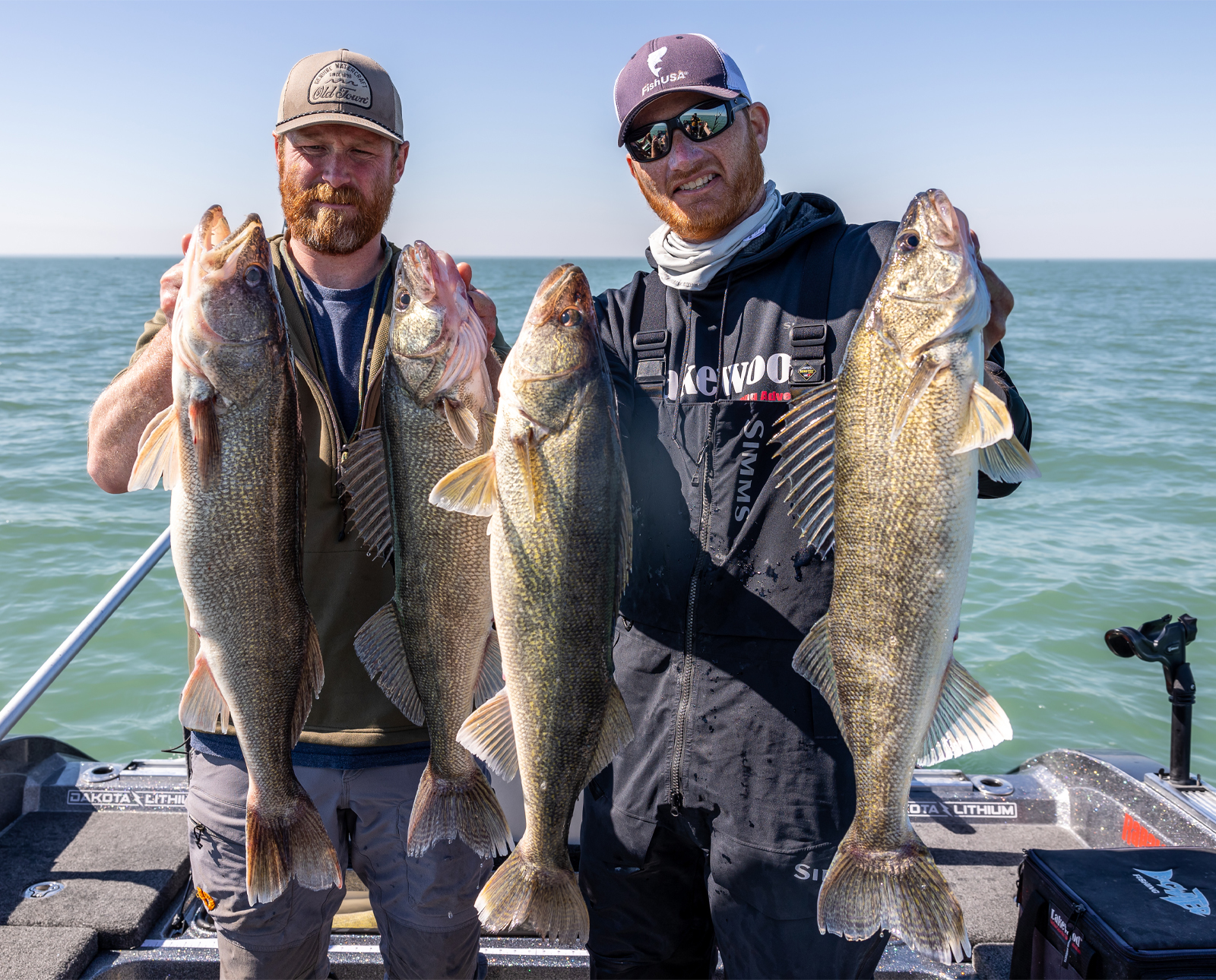How to Find Big Walleyes During the Spring Transition
Even by fish standards, walleyes are cold. They don’t dig nests like trout, guard beds like bass, or keep their young safe from a harsh world by mouthbrooding like hardhead catfish. Walleye spawning is about as intimate as nodding to an acquaintance as you pass on the street, a fact that anglers should keep in mind when fishing for them in the spring. Females typically arrive around the rock or gravel spawning grounds in tributary streams, reefs, or shoals and broadcast their eggs to be fertilized by waiting males. The sticky eggs settle into the surrounding structure to incubate for two or three weeks before hatching. By then, the parents, especially the females, are long gone.
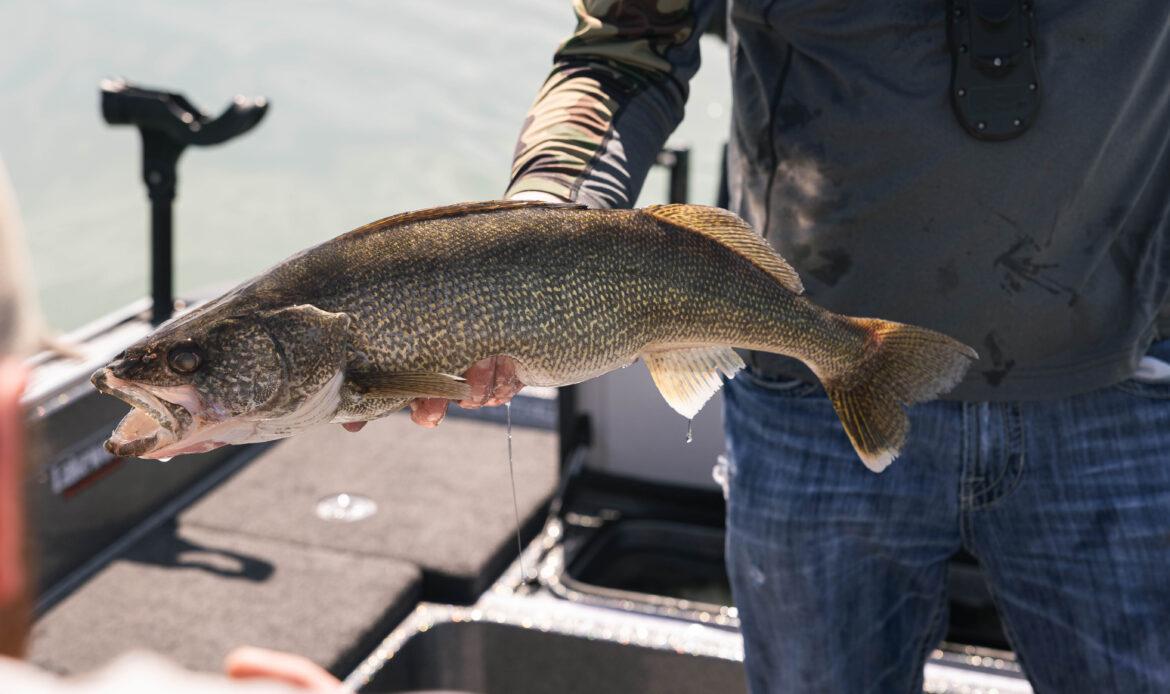
While the smaller males may lurk around these reproduction sites, big females don’t even stick around for breakfast. Groups of egg bearers may arrive one evening, do their business, and be gone before the sun comes up. While the actual spawn event can be important for anglers on smaller waters or up rivers, in large lakes and pseudo-oceans—like Lake Erie—the pre-spawn and post-spawn patterns of these larger fish are more salient than the actual egg-drop. Savvy anglers target the fish and they move into or away from spawning grounds, not the spawning areas themselves.
Capt. Ross Robertson is a veteran Lake Erie walleye guide, outfitter, competitor, and personality. He describes the Erie walleye spawn as a conveyor belt, with waves of fish moving in and out of river and reef spawning sites. But he doesn’t typically fish those places.
On a recent trip with Ross, he pointed to one reef covered in boats that he calls “the parking lot.” Anglers in 40 or so vessels sat or stood staring at sonar screens and twitching jigs.
“Too bad the fish aren’t there anymore,” Ross said, almost to himself.
Start by Finding Where Walleye Spawn
To target the largest fish in the fishery, Ross focuses on flats, shelves, and banks offshore from the reefs and river mouths. These are the places where larger fish will lurk, and feed, before or after doing their business. It’s important to know where the spawning grounds are, even if that isn’t the place to be.
“You try to figure out where the base things are and then follow the movements from there,” Ross said. “Sometimes the males can give them away. If you know that all the males are pulling up on some of the shallow rock reefs, the females will be there [soon] or are already there.”
But you have to hit it at exactly the right time to find the big ones shallow.
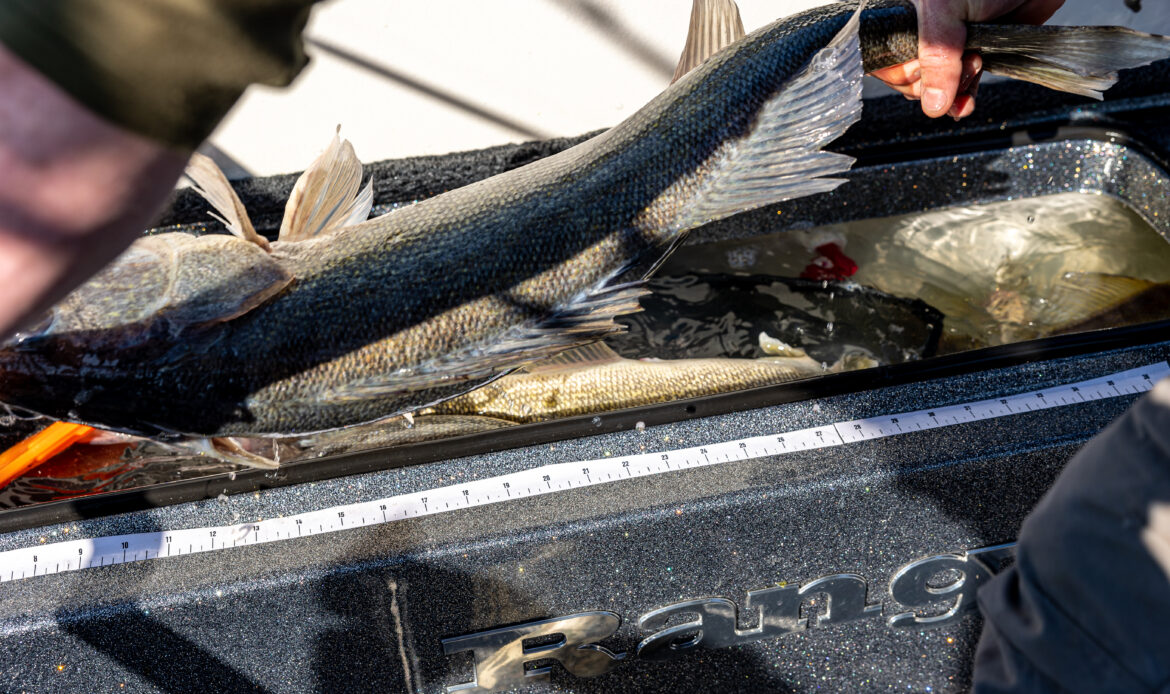
“Those pre and post-spawn fish are generally going to be out in transition areas,” Ross told me. “Now that could be many things depending on where in the lake you’re at. That could be somewhere in a river, that could be staged outside the river, that could be in the mud.”
There are an estimated 70-100 million mature walleye in Lake Erie. That many fish couldn’t physically breed at the same time, so they cycle through the spawning sites.
“They’re not hanging out at little areas. We’re not generally fishing structures that look great on paper, on a map,” Ross said “These fish are more like, do business, and leave. So, we’re using electronics.”
How to Use Your Electronics to Find Walleye
Because finding walleyes in transition can be like searching for the needle in the proverbial haystack, Ross crosses off empty spaces. He wants to know if there are fish around before he starts fishing.
“What I do is run the Humminbird Helix and I’ll run at 30 miles an hour and mark,” Ross said. “When you see giant bananas on the screen, you fish ’em. I can just cover so much more water because these fish are moving a tremendous amount and are generally not related to anything specific.”
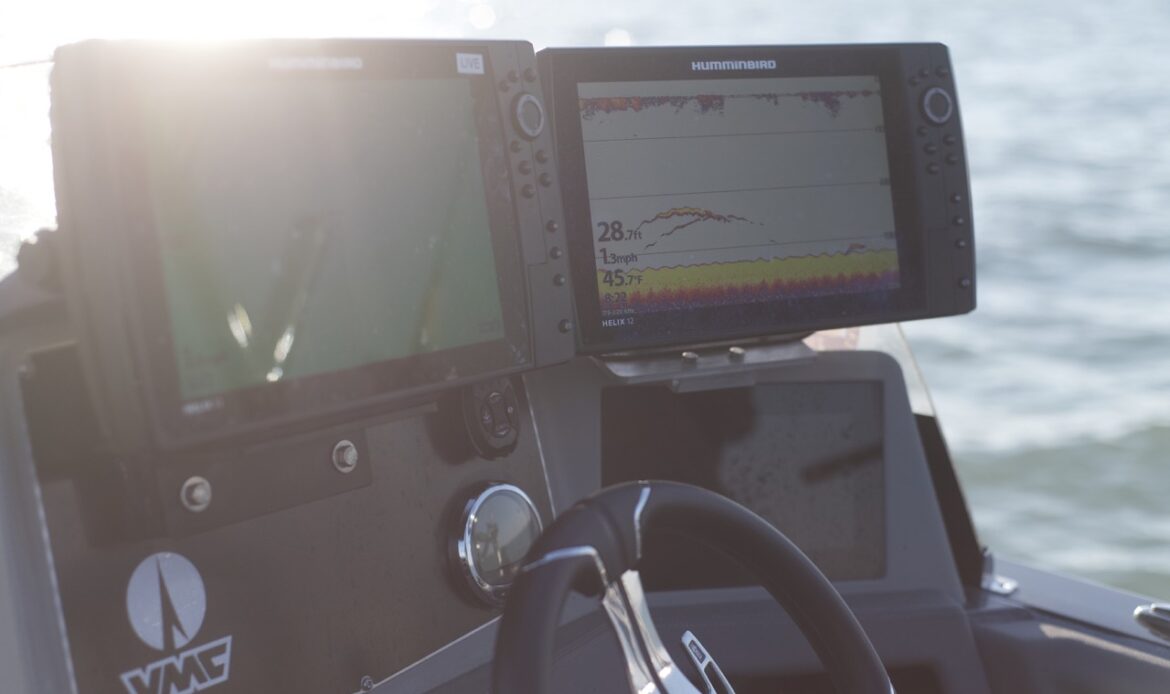
Egg-laying depth varies widely, but much of that activity occurs in less than 15 feet. Staging or spawned-out walleyes will be found deeper than that. Ross spends most of his time marking and trolling in 25 to 40 feet of water—not necessarily because there are more fish there, but the fish that are may be more catchable.
“Once you get much shallower than 25 feet, you’re not going to mark a lot of those fish accurately because they’re going to get out of the way.”
Be Stealthy
Anglers might not think of walleyes as spooky or boat shy. However, according to Ross, Lake Erie fish are sensitive to the presence of boats and even the buzz of sonar—especially the higher frequencies emitted by modern live-view transducers. They will actively avoid watercraft but seem less wary of the threat when there’s enough water between themselves and the hull.
The most effective walleye anglers typically troll with quieter electric motors rather than kickers. Planer boards allow you to cover broader swaths of water and put your crankbaits or spinners further away from the watercraft.
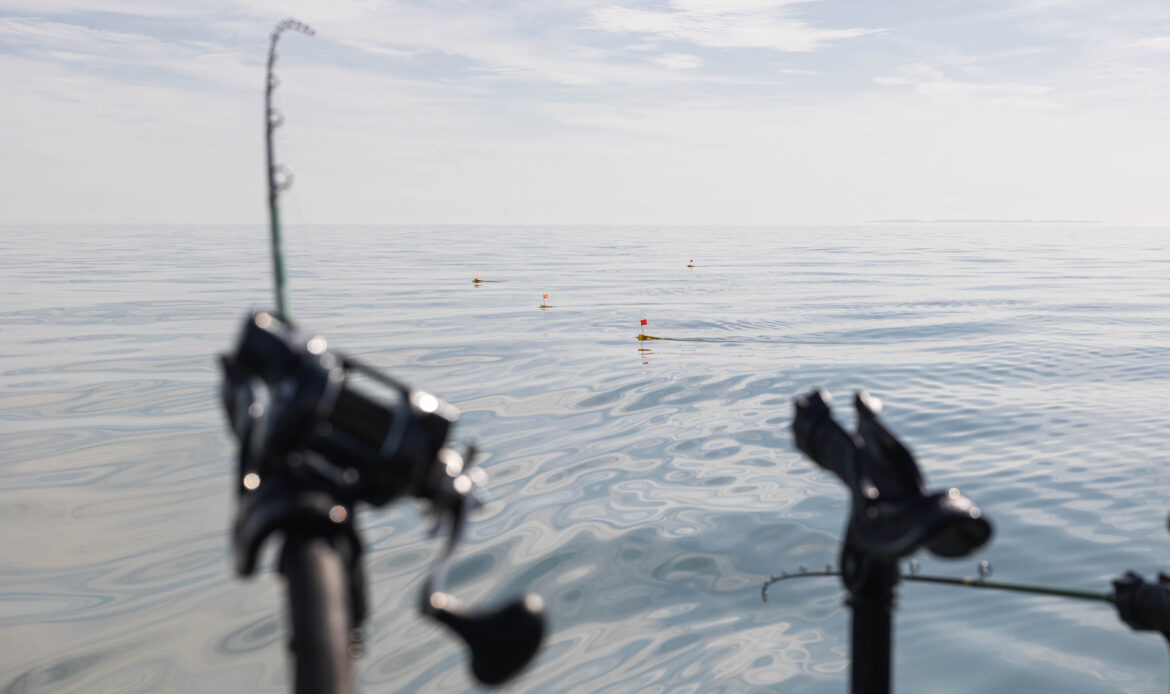
Follow the Fish, Not the Crowds
Fishing reports are like bagels. They’re less valuable even one day old.
Ross said that it rarely matters where he was catching fish yesterday. Each day the sun rises, transitional walleyes will be someplace new. Schools are actively moving and migrating, often not associating with any particular bathymetric feature.
“I’ve seen schools move 15, 20 miles in a day,” Ross said. “Statistically, with their acoustic telemetry, that’s actually a low number.”
Day to day, hour to hour, these fish travel, follow bait or avoid boat traffic. Clots of boats, like the “parking lot” Ross mentioned, may actually drive fish out of an area.
“I’ll make a trolling pass and just smoke ‘em and 30, 40 minutes later go right back through and never catch,” Ross said. “You don’t see anything on the screen. You might have been going east and they went west and you’re never going to meet back up with ’em.”
Understanding and embracing the spawn patterns within this inland sea may take some time and effort, but the ticket is to keep exploring.
“Lake Erie is one of the biggest lakes in the country,” Ross concluded. “If you fish memories, you’re gonna get hurt.”

